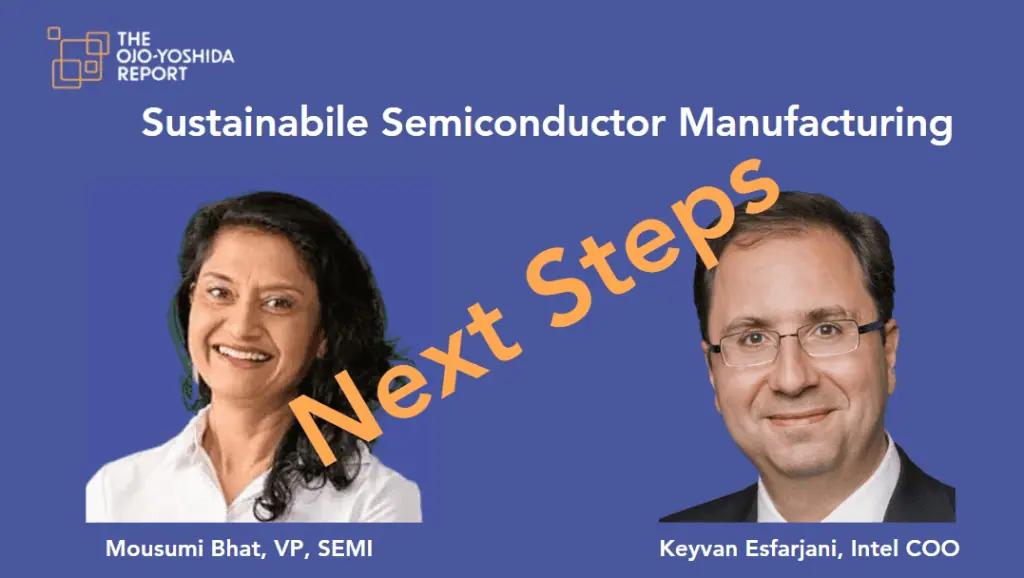
Will the road to Climate Hell, as the saying goes, be paved with good intentions?
That’s the question we’ve pondered over the past few months in conversations with promoters of sustainable semiconductor manufacturing, including Intel Corp., Applied Materials, chip R&D specialist Imec and the industry group SEMI. All are passionate in making the case for climate action. The challenge will be achieving buy-in from upstream suppliers and downstream chip consumers across the semiconductor ecosystem. Too many, it turns out, lack sustainability roadmaps needed as a starting point to chart a course to net-zero emissions by mid-century.
This is where rubber meets the road, the devilish details that determine whether the semiconductor industry can move from PowerPoint presentations to roadmaps, then ultimately to measurable action to reduce greenhouse-gas emissions.
Then there is the necessity of replacing or eliminating the toxic chemicals used to manufacture advanced semiconductors. This looks doable, at least in the mid-term. Alternative chemicals and manufacturing processes can be identified and implemented without sacrificing yields, cost or performance.
The sustainability movement gained traction during an industry event last year in San Francisco. Industry groups such as SEMI’s Sustainability Initiative are attempting to align manufacturers and their suppliers. All must be pulling in the same direction. The initiative builds on earlier efforts. For example, Intel claims it has for several decades been emphasizing sustainable chip manufacturing. Those early efforts must become business as usual.
AI challenge
With the rise of AI, semiconductor demand in the form of power-hungry GPUs and accelerator chips is surging. Data centers bursting at the seams with AI workloads are draining regional electric grids. In Northern Virginia, home to more data centers than anywhere on Earth, utilities are considering coal-fired plants to meet electricity demand. That reality endangers the chip industry’s net-zero goals.
There are positive signs that large consumers of AI and other chips are shifting to renewables. For example, cloud service giant Microsoft has agreed to purchase about $10 billion in renewable energy projects. The “global renewable energy framework” with Toronto-based Brookfield Asset Management would deliver more than 10.5 gigawatts of generating capacity.
Without such zero-carbon energy investments, it may turn out that the best we can hope for is a “net positive” reduction in greenhouse gases by 2050, well short of the semiconductor industry’s stated goals.
That, along with good intentions, are not good enough. Our deep dive into sustainable semiconductor manufacturing is a call to action, an attempt to hold to account a strategic industry that is receiving generous government subsidies and tax breaks.
The industry must deliver on its sustainability pledges, and we intend to hold them to that pledge.
What follows is our wrap-up discussion with industry stakeholders, including Intel manufacturing and supply chain chief Keyvan Esfarjani. We examine the next steps in the drive toward sustainable semiconductor manufacturing, and when we can expect meaningful progress toward reducing the chip industry’s carbon emissions.
George Leopold, a frequent contributor to the Ojo-Yoshida Report, is the author of Calculated Risk: The Supersonic Life and Times of Gus Grissom.
Copyright permission/reprint service of a full TechSplicit story is available for promotional use on your website, marketing materials and social media promotions. Please send us an email at [email protected] for details.
